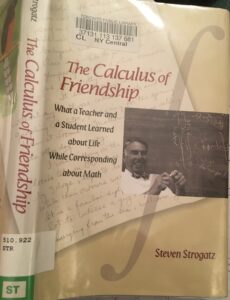The question of how to pronounce my names is frequently asked.
Joot isn’t Dutch, but is Estonian. I’m not sure what sort of linguistic crossover there is between the two languages, if any(**).
Dad was Estonian, and he wanted us all to have Estonian spellings of our names (Peeter, Krista, Erik, Karin.) Dad pronounced my name with the standard North American pronunciation for Peter. However, my Vanaema (grandmother) pronounced Peeter with enunciation of all the e’s in a way that I can’t actually vocalize myself. Estonian words have lots of doubled vowels (google finds me Kuulilennuteetunneliluuk as an example (a nice long palindrome (*))). Unlike doubled vowels in English, if they are there, it’s because they should all be pronounced.
If somebody named Peter says that I spell my name wrong, I rebut by calling them pet-er, since the long e requires vowel doubling per English spelling conventions (i.e. my name is spelled correctly, but their spelling is wrong.)
My last name Joot is pronounced as like “Yoat”, like oat. I can’t recall the subtleties of how Vanaema pronounced Joot, but I’m sure she also somehow enunciated both o’s. When I was a kid, I was very inflexible about the pronunciation of my name, and insisted on “Yoat”, not “Jewt”. That inflexibility was too much work, and I mellowed out considerably over time. I now flexible and respond to anything that approximates any possible pronunciation that I can recognize, and no longer correct anybody.
People correct the spelling of names for me all the time, as they couldn’t possibly be spelled right as is.
(*)
Originally I thought I saw an article that said that kuulilennuteetunneliluuk also meant palindrome, but cannot find that anymore. Instead, googling this word, I find it translated as “the hatch a bullet flies out of when exiting a tunnel“. If kuulilennuteetunneliluuk actually meant palindrome, that would be the most amazing word for palindrome in any language! I’m very sad that I appear to have gotten the meaning wrong. My hope for the future of linguistics, is that Estonians will start using kuulilennuteetunneliluuk as a word for palindrome, giving it a second meaning through popular use. If that trend can be started, eventually the Estonian language has the best word for palindrome in any language.
(**)
On the other hand, Dad said he could understand most of Finnish when spoken (but said that Finns couldn’t understand him.) I’m guessing that this means Finnish was probably a root of Estonian, but dialect could also be a factor, as I’ve since met Finns that said they could understand some Estonian. Dad talked about the dialect variation from Estonian town to town at the beginning of the 1900’s, which was apparently so bad that understanding somebody from a few towns away could be difficult. By the time he was born, radio was starting to obliterate that dialect variation. He also wouldn’t have heard that dialect variation first hand, since he escaped the Soviet invasion of Estonia with my grandmother when he was only 3. His refugee journey started in Finland (who had a pact with the Soviets to kick out refugees after some fixed time (i.e.: the Soviet’s said “kick out refugees, or else we’ll invade you too!”) After a few years in Sweden, Dad and Vanaema eventually landed in Canada.
